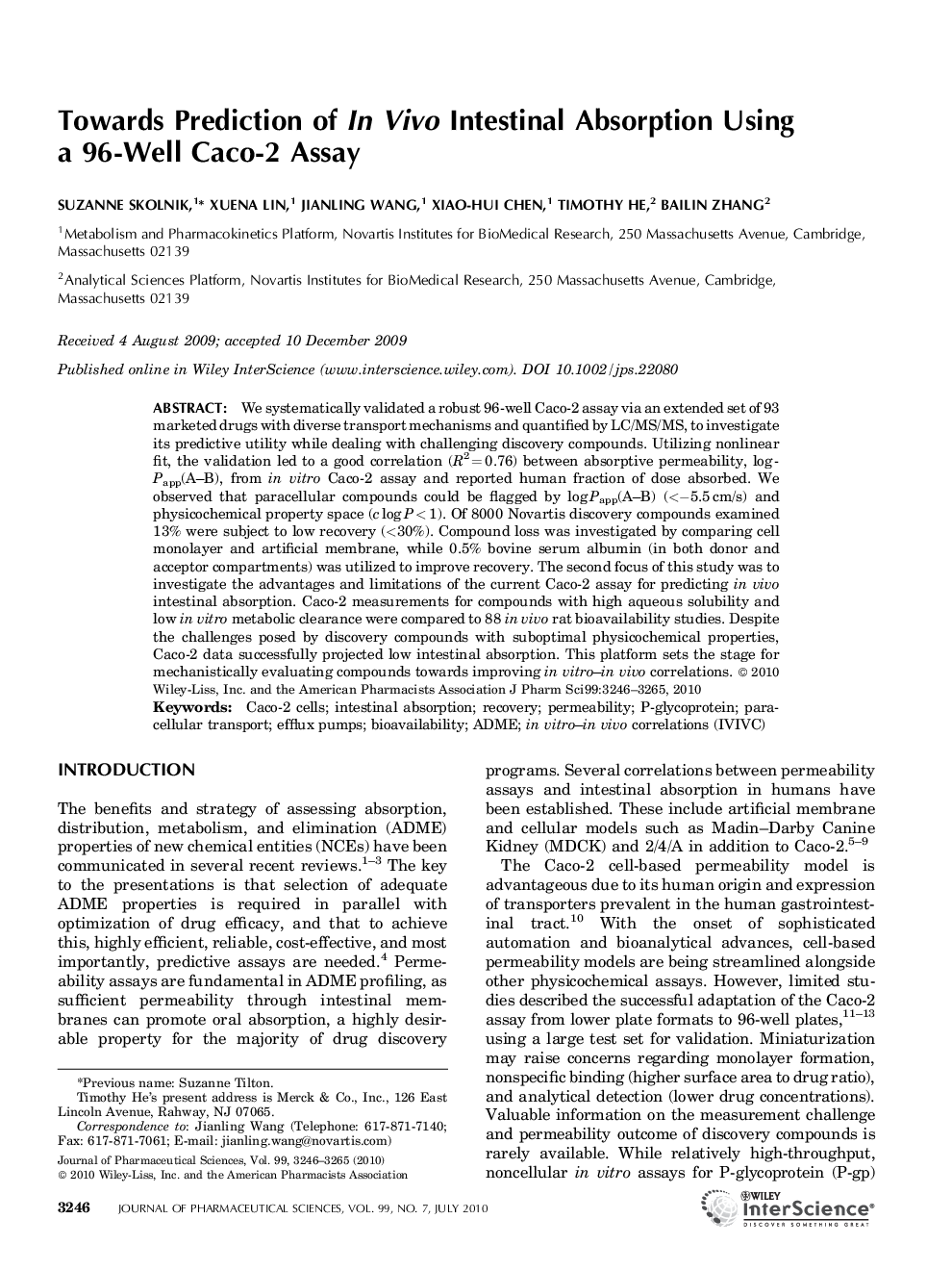| Article ID | Journal | Published Year | Pages | File Type |
|---|---|---|---|---|
| 2486288 | Journal of Pharmaceutical Sciences | 2010 | 20 Pages |
Abstract
We systematically validated a robust 96-well Caco-2 assay via an extended set of 93 marketed drugs with diverse transport mechanisms and quantified by LC/MS/MS, to investigate its predictive utility while dealing with challenging discovery compounds. Utilizing nonlinear fit, the validation led to a good correlation (R2Â =Â 0.76) between absorptive permeability, log-Papp(A-B), from in vitro Caco-2 assay and reported human fraction of dose absorbed. We observed that paracellular compounds could be flagged by log Papp(A-B) (<â5.5Â cm/s) and physicochemical property space (c log PÂ <Â 1). Of 8000 Novartis discovery compounds examined 13% were subject to low recovery (<Â 30%). Compound loss was investigated by comparing cell monolayer and artificial membrane, while 0.5% bovine serum albumin (in both donor and acceptor compartments) was utilized to improve recovery. The second focus of this study was to investigate the advantages and limitations of the current Caco-2 assay for predicting in vivo intestinal absorption. Caco-2 measurements for compounds with high aqueous solubility and low in vitro metabolic clearance were compared to 88 in vivo rat bioavailability studies. Despite the challenges posed by discovery compounds with suboptimal physicochemical properties, Caco-2 data successfully projected low intestinal absorption. This platform sets the stage for mechanistically evaluating compounds towards improving in vitro-in vivo correlations.
Keywords
Related Topics
Health Sciences
Pharmacology, Toxicology and Pharmaceutical Science
Drug Discovery
Authors
Suzanne Skolnik, Xuena Lin, Jianling Wang, Xiao-Hui Chen, Timothy He, Bailin Zhang,
